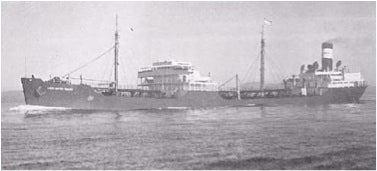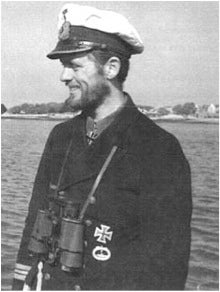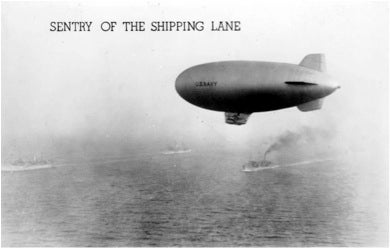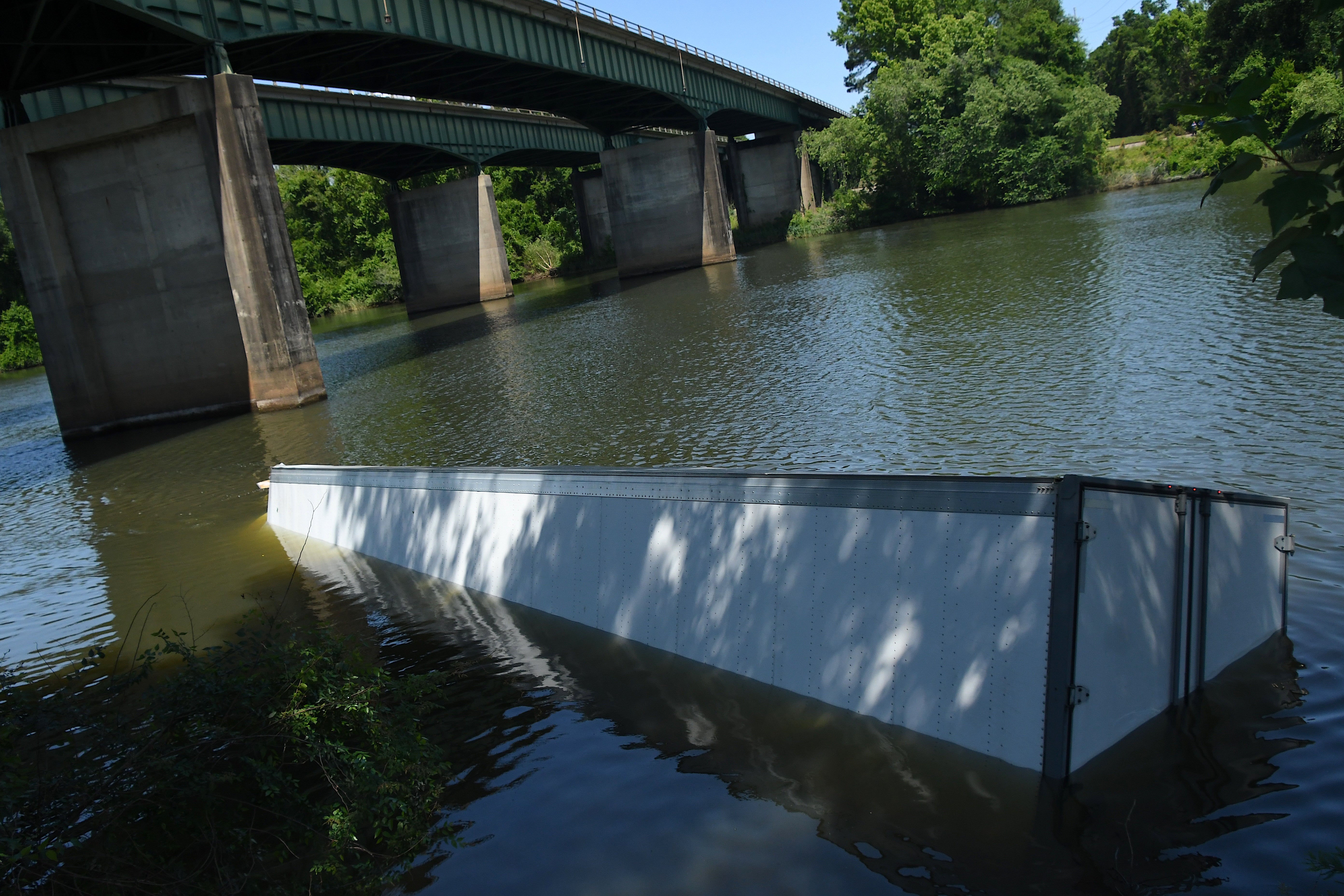War came to Georgia’s shores
Published 5:23 pm Friday, March 4, 2011
By JOHN P. VANZO
Special to The Post-Searchlight
Georgia’s closest brush with actual combat operations in World War II occurred when American air and naval forces battled prowling German U-boats along the state’s Atlantic coastline.
During the course of the war, five Allied merchant ships were sunk off Georgia beaches. By late 1943, however, Georgia’s coastal defenses had grown so formidable that German submarines no longer dared to threaten the area.
Georgia’s defenses
Throughout the 1930s and early 1940s, American military planners were confident that in the event of war, combat would never come near the state of Georgia. Georgia was located far out of range of any potential enemy’s aircraft, and the state’s waters were considered an unlikely target for enemy submarine attacks.
Firstly, the state’s coastline is relatively short, stretching less than 100 miles between the South Carolina and Florida borders. More importantly, the continental shelf off Georgia’s coast is extremely shallow; submerged enemy submarines would have only a few feet of water over their conning towers, making them very vulnerable to being spotted and attacked.
Adding to the planners’ confidence was the fact that, aside from geographic factors, Georgia was relatively well defended. Because of its economic and industrial importance to the American war effort, the state quickly became the site of several large military bases.
Most important to the anti-submarine effort was Chatham Army Airfield and Hunter Army Airfield, both located near Savannah. One of the most effective military bases in the U-boat war was Glynco Naval Air Station located near Brunswick, which was home to both fixed-wing and lighter-than-air anti-submarine aircraft. The port of Savannah itself hosted an assortment of small coastal patrol and anti-submarine warships.
War comes the shores
Despite elaborate pre-war plans for the defense of Georgia’s coastline, the area was still extremely vulnerable to attack when the United States officially entered World War II on Dec. 8, 1941.
Early anti-submarine patrols were sporadic and uncoordinated, and American admirals at first refused to require merchant ships to sail in bothersome convoy formation. Even worse, many Georgia coastal communities openly disobeyed orders for nighttime blackouts because of the effect they had on the tourist trade. The defenders were quickly shaken from their complacency, however, when the U-boat threat finally hit home in the spring of 1942.
Reinhard Hardegen, skipper of the German submarine U-123, had already drawn Georgian blood in January 1942, when his U-boat sank the freighter City of Atlanta. The 5,200-ton merchantman was based in Savannah, and many of the 43 sailors who died in the attack were residents of the city.
On his next war patrol two months later, Hardegen once again steered his submarine toward America. Sailing southwards down along the eastern seaboard, the U-123 sank four ships before entering Georgia waters. The U-123 stealthily moved to an ambush position in the shallow waters just off St. Simon’s Island.
In the early morning hours of April 8, 1942, the German U-boat ace spotted a large tanker silhouetted against the brightly illuminated shoreline. Hardegen fired a torpedo and sank the 9,200-ton oil tanker Oklahoma. Less than an hour later, he spotted and sank another tanker, the 8,000-ton Esso Baton Rouge.
The next morning, the U-123 sank a third ship, the steamship SS Esparta, about 14 miles south of Brunswick. Hardegen then sailed south to prowl Florida waters, where he sank a further four ships before returning to base.
A total of 23 crewmen were killed in the Georgia attacks. Survivors from the ships were rescued and brought to shore by several Coast Guard ships and a private yacht owned by Coca-Cola magnate Charles Candler. Fortunately, the two tankers had sunk in such shallow water and so close to shore that they were eventually salvaged and refloated. After extensive repairs, both ships rejoined the war effort. Ironically, the same two ships were sunk a second time by U-boats, this time permanently, later in the war.
Georgia reacts
The slaughter along Georgia’s coastline threw the state into a panic. The gigantic blasts from the exploding tankers had shattered windows in nearby Brunswick, and thick oil fouled beaches in the area for weeks afterward.
Frightening rumors of German saboteurs landing on shore began circulating throughout the coastal communities.
The Roosevelt Administration was compelled to act decisively to end the U-boat threat along America’s coastline. The Navy finally adopted the British system of convoying ships, and air and naval patrols were greatly increased.
Most importantly for the defense of Georgia, the submarine-hunting blimps of Airship Squadron 15 were stationed at Glynco Naval Air Station, providing round-the-clock protection against U-boats.
Georgia’s coastal defenses grew so formidable that enemy submarines never again dared to come within sight of land. During the summer of 1943, two more American tankers were sunk approximately 150 miles east of Brunswick. But by then the tide of war had turned against the U-boats. The hunters had become the hunted, and German U-boat threat in Georgia waters ended once and for all.
John Vanzo is an associate professor of political science at Bainbridge College, where he has taught since 2001. A version of this article was published earlier this month in the New Georgia Encyclopedia, an online resource designed for Georgia public school and university students. An avid collector of World War II militaria, Vanzo also contributed several U-boat items to the Coastal Georgia Historical Society’s maritime center museum located on St. Simon’s Island, near where this story took place. Vanzo’s book Steel Boat, Iron Hearts, about the wartime exploits of the German submarine U-505, was published in 2005.
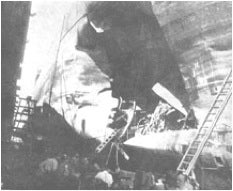
Torpedo damage to the hull of the SS Esso Baton Rouge. Dockyard workers had the gruesome task of removing the bodies of several dead sailors before repairs could be made to refloat the ship.



